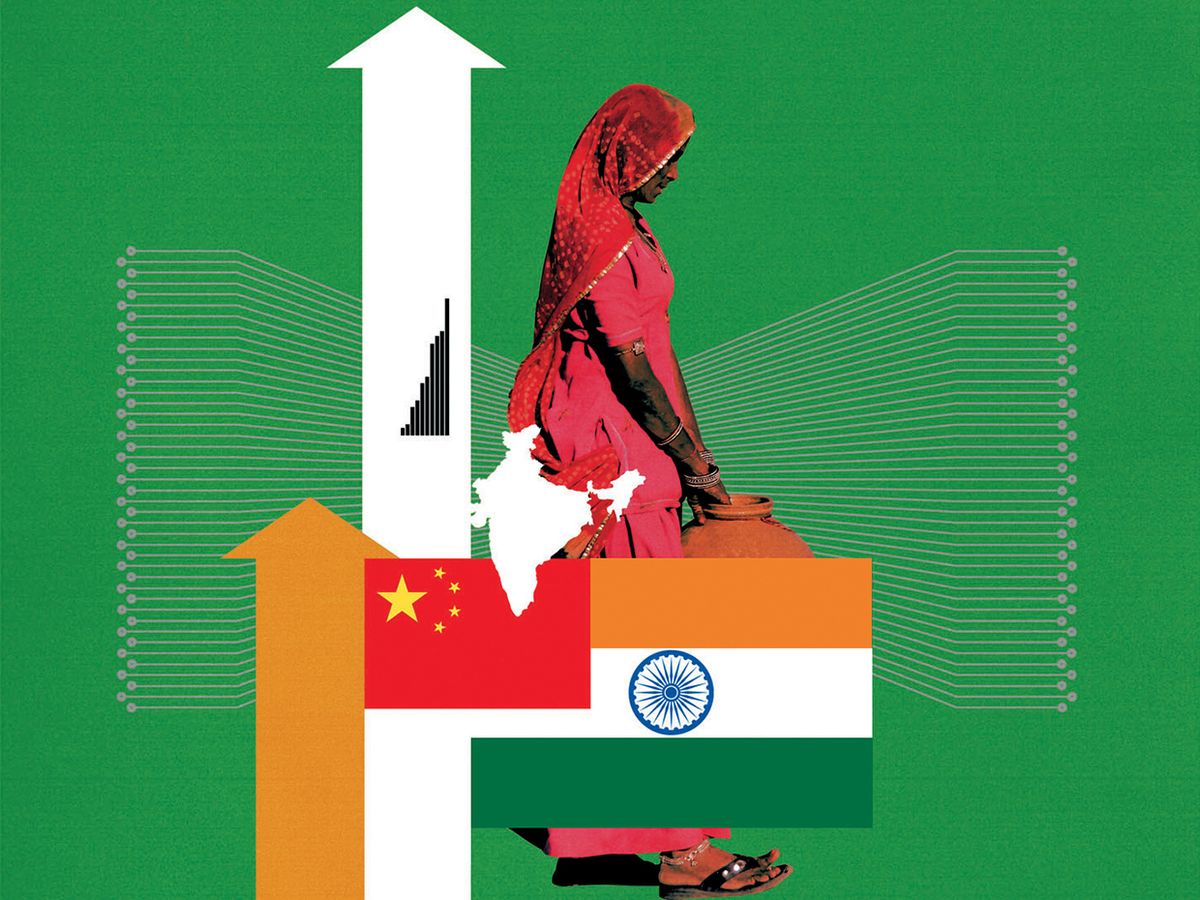
It’s in the cards: India will soon supplant China as the world’s most populous country. The question is whether India will also rise to challenge China as an economic powerhouse.
At least since the unraveling of the Roman Empire, successive Chinese dynasties have ruled over more people than any other government. China had about 428 million people in 1912, when imperial rule ended; 542 million in 1949, when the Communists took power; 1.27 billion by the year 2000; and about 1.41 billion by mid-2017. The slowing growth rate is the direct result of the one-child policy, adopted in 1979 and ended in 2015. Meanwhile, India’s population expanded from 356 million in 1950 to 1.05 billion in 2000 and to 1.31 billion in 2016.
China’s edge comes to just 7 percent, a mere 100 million people—about the population of the Philippines. And, given the reliability of short-term demographic forecasts, it’s clear that India will surpass China’s total before 2025, perhaps as early as 2023.
Meanwhile, it is fascinating to compare the two giga-states. Both countries selectively abort many girls, creating abnormal sex ratios at birth. The normal ratio is 1.06 males per one female, but India stands at 1.12, China at 1.15.
Both countries are riddled with corruption: The latest Corruption Perceptions Index, from Transparency International, puts them both at 79th place among the 176 included countries (with Denmark at the top and Somalia at the bottom). In both countries the economic inequality, as measured by the Gini index, is over 35 and (given the poor data) it might have moved much higher still. And in both countries the moneyed classes compete in ostentatious consumption, collecting expensive cars and palatial residences. Mukesh Ambani, chairman of Reliance Industries Limited, owns the world’s most expensive private residence; it has a perfect view of Mumbai’s slums.
But there are fundamental differences. Rapid economic growth since 1980 has made China by far the richer of the two, with a nominal GDP nearly five times that of India (US $11.2 trillion versus $2.3 trillion). China’s per capita average, measured in terms of purchasing power parity, was more than twice as high ($15,400 versus $6,600).
On the other hand, China is a tightly controlled one-party state run by a politburo of seven aged men, while India continues as a highly imperfect but undeniably democratic polity. Freedom House assigns India 77 points on its freedom index compared with a measly 15 points for China. The United States gets 89, Canada 99.
Another comparison is equally revealing: One of China’s top high-tech achievements is to employ ferocious censorship of the Internet; one of India’s great high-tech achievements is its disproportionate contribution to high-tech corporate leadership at home and abroad. Many Indian emigrants have risen to leadership in Silicon Valley—Sundar Pichai at Google, Satya Nadella at Microsoft, Shantanu Narayen at Adobe, and Sanjay Jha at GlobalFoundries, to name a few.
It will be fascinating to see to what extent India can replicate China’s economic success. China, for its part, must cope with its loss of the demographic dividend, manifest in an aging population. Since 2012, China’s dependency ratio—the number of people of working age divided by the number of those who are too young or too old to work—has been rising. The question is whether the country will become old before it can become truly rich.
One last complication: These two nuclear powers have yet to sign a binding treaty to end their territorial disagreement in the Himalayas. They’ve come to blows over the matter, most notably in 1962. Things can get touchy when rising powers sit athwart a disputed border.
Vaclav Smil writes Numbers Don’t Lie, IEEE Spectrum's column devoted to the quantitative analysis of the material world. Smil does interdisciplinary research focused primarily on energy, technical innovation, environmental and population change, food and nutrition, and on historical aspects of these developments. He has published 40 books and nearly 500 papers on these topics. He is a distinguished professor emeritus at the University of Manitoba and a Fellow of the Royal Society of Canada (Science Academy). In 2010 he was named by Foreign Policy as one of the top 100 global thinkers, in 2013 he was appointed as a Member of the Order of Canada, and in 2015 he received an OPEC Award for research on energy. He has also worked as a consultant for many U.S., EU and international institutions, has been an invited speaker in more than 400 conferences and workshops and has lectured at many universities in North America, Europe, and Asia (particularly in Japan).


